
1920

Along with engineering the 1920's saw some changes to the appearance and design of their motorcycles. Many which are recognizable today. One change was the introduction of the first 74 cubic inch V-twin engine in 1922. The JD and FD models. The new "teardrop" shaped gas tank which debut in 1925 set basic appearance for all subsequent Harley-Davidson motorcycles. The horn and headlight switched positions this year, and the tool box, (which could be used for a lunch or glove box), was now on top of the fuel tank. Muffler cut-outs were larger and remained standard on the J models. Harley-Davidson dealerships are now found in sixty-seven countries. Their two-cam pocket valve engine was a dominant motorcycle in 1920, winning the Dodge City race, and a 200 mile race in Marion, Indiana. Their J model was continued with complete electrical equipment as it had proved itself since it's introduction in 1915 and was carried as their top of the line motorcycle.
In addition to having a different engine than street version JDs, many of the racers were stripped to the bare essentials for speed and performance. No Brakes, clutch, or transmission was supplied and seats, and handlebars were pared down to shed weight and decrease lap times. Available in many forms, the JDs including a twin-cam-engined racer which set a record in February 1921, on a Fresno California board track, a Harley-Davidson became the first motorcycle ever to win a race with an average speed of over 100 mph. The horizontally opposed Sport twin was also carried again in 1920, with electric lighting, the battery box under the seat.
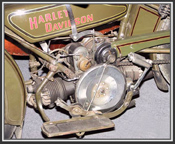
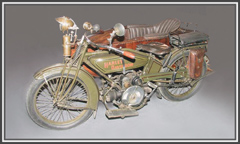
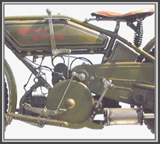
The twin Sport had less horsepower, and less ground clearance than other Harley models, but still set it's own share of records. It was the first motorcycle to go up Mount Baldy in San Bernardino, California, and set a winning time in the 3-Flags run from California to Mexico. The Sport's popularity was still greater in Great Britain and Europe than it was in the U.S. The V-Twin was still the motorcycle of choice for Americans. The Sports were distinguishable from other motorcycles by the larger external flywheel on the left side of the engine. The production total for 1920 was record setting for the company with a production of 28,189 motorcycles, but because of the surplus of motorcycles from military contracts, their production totals dropped for the next few years which were to follow. The war was partly responsible for engineering and production developments, though had resulted in extra surplus after the war.

1920 FCA Racer
Racing had become a strong force in 1920 and the Two-Cam pocket valve was dominant. Indian was still a major competitor for Harley Davidson on the race track, winning a major portion of the racing events for the year. By 1920, Harley Davidson had become the largest motorcycle manufacturer in the world, with dealers in 67 countries, with a production of 28,189 motorcycles, and won every national racing event and competition in 1921. By 1920, Harley Davidson management started setting up training schools for military mechanics, creating the beginning of the factory approved Harley Davidson service schools.
In 1921 a new 74 inch (1200cc) model JD (with battery), and FD (with magneto), was added along with the 61 inch (1000cc) engine with produced 18 horsepower. The new 1200cc engine was seen as a major step for the sidecars. Compression shins were fitted to the sidecar motor for the lower rpm work of the sidecars as well as a 16 tooth counter-shaft sprocket; two teeth less than the solo motor as well as a new 2-passenger sidecar was added along with the 74 inch engine. The difference between the 61 and the 74 could be distinguished by the five, (instead of six), cylinder fins above the exhaust port.
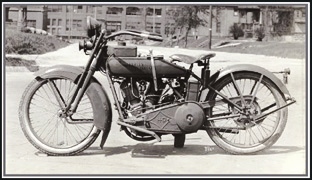

1921 J
Development of the JD was prompted by the fast growing popularity of the four cylinder engine another company was producing. Smooth and powerful four cylinder engines were threatening the V-Twins dominance not only in sporting but in commercial as well.

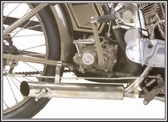

The lettering on the tank of the Sport twins was changed to the standard logo used on the other models in 1921and In 1922 the front fork and handlebars were modified. 1922 also brought a color change to Brewster Green from the previous Olive Green to their motorcycles and gold pin-stripping was added to the fenders and other parts of the motorcycle though Harley-Davidson kept Olive Green available as a color and returned as a standard color again in 1924. The earlier models came with, (or without), acetylene lights.
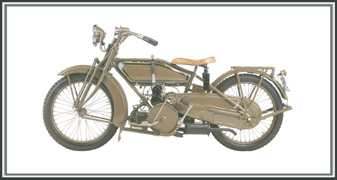
1921Wj Sport
In 1922, other than switching from Olive to Brewster green, and gold striping was added to the fenders and other body work. The front brake and handlebar were also slightly modified, the first 74 cubic inch V-twin came out introduced as the JD and FD modes; an inlet-over-exhaust, 45 degree hard-tail known as the 22JD or 22FD, depending on whether or not it used a generator or a magneto. Better known as Super-powered Twins, the two bikes cost either $390.00 or $360.00. It made 18 horsepower through a 3(7/16)" x 4" engine, and used aluminum pistons instead of cast iron. Advances in engine efficiency, ease of maintenance, and suspension were among the advancements in design and engineering. Harley-Davidson riders swept all eight National Championship races.

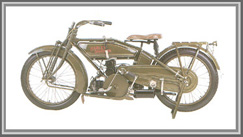
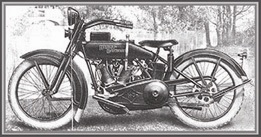
1922 JD 74 1922 Wj Sport 1922 JD
The main models for 1923 were the 23F: solo-61ci F-head, V-twin, chain drive, magneto ignition, 8.68hp, number preceded by 23F. Model 23: FS-Sidecar Twin, 61ci F-head V-twin, 3 speed, magneto, sidecar gearing. Model 23FD: Solo 74ci F-head V-twin, chain drive, magneto ignition, 9.5hp, number preceded by 23FD, 3 speed. Model 23FDS: Sidecar Twin, 74ci f-head V-twin, 3 speed, sidecar gearing, magneto. Model 23J: Solo 61ci chain drive, generator, 8.68hp, number preceded by 23J, 3 speed. Model 23JD: Solo 74ci F-head V-twin, chain drive, generator, 3 speed, 9.5hp, number preceded by 23JD. Model 23JDS: Sidecar Twin, 74ci F-head V-twin, 3 speed, magneto. Model 23JS: Sidecar-Twin, 61ci-fhead twin, 3 speed, electrical, sidecar gearing. Model 23WF: Sport model solo, 35.64ci (584.03cc), horizontally opposed twin, 3 speed, magneto, and Model 23 WJ: Sport model solo, 35.64ci (564.03cc) horizontally opposed twin, 3 speed, electrical system.

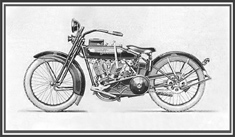
1923 with Sidecar 1923 JD
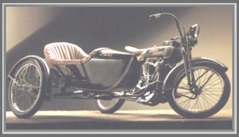
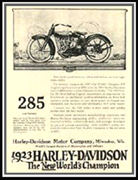
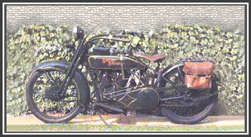
1923 JD 74 with Sidecar 1923 Advertisement 1923 V-Twin
For their specialty models, they offered: Model 23FA: “A” motor, 61ci F-head, V-Twin, 3 speed, magneto. Model FCA: 61ci F-head, V-Twin, 3 speed, magneto. Model 23FDA: “A” motor 74ci F-head, 3 speed, magneto. Model 23FDCA: 74ci F-head, V-Twin, 3speed, magneto. Model 23FE: “E” motor 61ci F-head, V-Twin, 3 speed magneto. Model 23JDA: “A” motor 74ci F-head, V-Twin, 3 speed, electric ignition. Model 23JDCA: 74ci F-head, V-Twin, 3 speed, electric ignition. Model 23 JE: “E” motor 61ci F-head V-Twin, 3 speed, electric ignition. Model 23S: Track Racer, F-head single, magneto, and the Model 23T: Track Racer, F-head V-twin, magneto.
They also offered: Model 23LC: Right-hand, standard chassis, 42-1/2” tread. Model 22LR: Right-handed single passenger Roadster sidecar. Model 23LT: Right-handed single passenger Tourist sidecar. Model 23LX: Right-handed Speedster sidecar. Model L23LQ: Left-handed two passenger sidecar chassis. Model L23LQT: Left-handed two passenger sidecar body. Model L23LT: Left-handed standard chassis, 46-1/2” tread. Model 23M: Standard commercial sidecar. Model 23Q: Two passenger sidecar chassis, 52in tread, and the Model 23QT: Right-handed two passenger Tourist sidecar, for their Sidecar and Chassis line. Their production total for 1923 was 18, 430, producing 2,822 Model F's, 629 Model FD's, 4,802 Model J's, 7,458 Model JD's, 614 Model WF's, and 481Model WJ's.
In 1923, H-D changed the design of their 2-cam race motor. The crankcase was beefed up and with it the timing chest changed from the previous "banjo" shape to an irregular shape that has been loosely described as resembling a "kidney bean." As with the banjo 2-cam, the 1923 design employed separate roller cam followers on which the tappets rode. These motors are known as "indirect-action" 2-cams because of the intermediate step of the cam followers between the tappets and the cams. The tappet blocks of the "indirect-action" 2-cam motors are cast as an integral part of the crankcase. By the middle of 1924, they changed the valve-train design to "direct-action" where the tappets ride directly on the cams. The tappet blocks on the "direct-action" motors are separate bronze or steel castings bolted to the crankcase.
As with the "banjo" 2-cams, the 1923 through 1927 "kidney bean" style of 2-cam were not sold to the public. They were supplied to factory riders or loaned to dealers for use by their top-flight riders. These racing 2-cams displayed a three digit serial number preceded by the letters: "FH," "FHB," "FHAC," or "FHAD." Along with the street version 2-cam introduced in 1928, H-D continued to build an "FH" race motor until production of all 2-cam motors ceased in 1929. The "FH" motors are most easily identified by the fact that unlike the production model, they do not have a number boss on the crankcase; the serial number is stamped directly into the side of the crankcase itself.
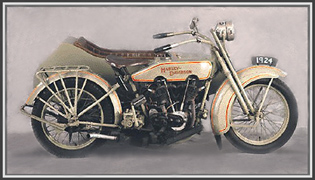
1924 61ci
No singles were offered again for 1924, but several variations of the twin were. Model 24FE: Twin, chain drive, magneto ignition, 8.68hp, 60.34ci, number preceded by 24FE, three speed, with aluminum pistons. Model 24FD: Twin, chain drive, magneto ignition, 8.68hp, 60.34ci, number preceded by 24FD, three speed, with cast iron pistons. Model 24DCA: Twin, chain drive, magneto ignition, 9.5hp 74ci number preceded by 24FDCA, three speed, aluminum pistons. Model 24FDCB: Twin, chain drive, magneto ignition, 9.5hp, 74ci, number preceded by 24FDCB, three speed, with iron alloy pistons. Model 24JD: Twin, chain drive, generator, 9.5hp 74ci, number preceded by 24JD, three speed, cast iron pistons. Model 24JDCA: Twin, chain drive, generator, 9.5hp, 74ci, number preceded by 24JDCA, three speed, aluminum pistons. Model 24JDCB: Twin-chain drive, generator, 9.5hp, 74ci, number preceded by 24JDCB, three speed, iron alloy pistons. Model 24JE, twin chain drive, generator, 8.68hp, 60.34ci, number preceded by 24JE, three speed, with aluminum pistons, were offered with their production total being 13,996 motorcycles.
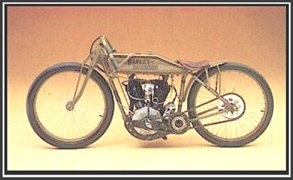
1924 FCA Track Racer
They also made a 1924 Indirect-Action model FH, which was their 2-cam racer. Indirect-action two-cams of this design were produced only in 1923 and 1924. This engine dominated in pro racing, and in the U.S. was successful in both board track as well as dirt track events. In Europe, this model, equipped with a transmission chassis, was also successful in road racing.

1925
In 1925, there was still no singles offered. Model 25FE: Twin, chain drive, magneto ignition, 8.68hp, 60.34ci, number preceded by 25Fe, 3 speed, iron alloy pistons,. Model 25FDCB: Twin, chain drive, magneto ignition, 9.5hp, 74ci, number preceded by 25FDCB, 3 speed iron alloy pistons, Model 25JDCB, Twin, chain drive, generator, 9.5hp, 74ci, 3 speed, iron alloy pistons, and Model 25JE, Twin, chain drive, generator 8.68hp, 60.34ci, 3 speed, iron alloy pistons, number preceded by 25JE were offered for their twins with a production of 16, 929 and board and track racing was on it's way to becoming history. On July 4th, a racing goal was achieved of riding a 100-mile race in less than one hour. In 1925 the cradle frame was replaced by a lower unit using an engine plate between the front and rear down-tubes and the seat height was lowered by three inches which lowered the center of gravity and provided easier handling.
Also added were a smaller diameter of wheel rims, which helped create a lower overall stance and wider tires which provided a better grip on the roadways and the new "streamlines" were available for five dollars less for their 61's and the same price for their 74's.

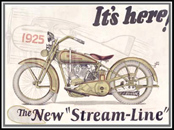
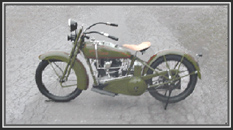
1925 FE 61ci Twin 1925 JD 1000cc
Board-track racing was well on it's way to making history by 1925. Separate classes were created for slower motorcycles which meant the singles. The 500cc engine had been used for national championships since 1922. By 1926 the racing events were scheduled with a mixed displacement for twins and singles. The seat post spring was been lengthened from 9 to 14 inches giving a more forward seat position which gave the riders better control of their motorcycle.
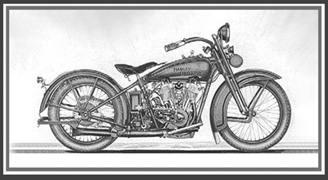

1926 Twin 61ci 1926 Twin 74ci
In 1926, single-cylinder engines were available again, having been discontinued in 1918. Models 26A, 26AA, 26B, and 26BA in both side-valve and overhead-valve engine configurations. Harley Davidson had gone without a road model single for three years. Harley came out with a 350cc this year which was the first side-valve engine since the sport twin, and the first overhead-valve offered to the public (the AA and the BA models). The over head valve version debuted in the Milwaukee race in 1925 and was then named the peashooter because of it's exhaust sound and was built in limited numbers primarily for racing
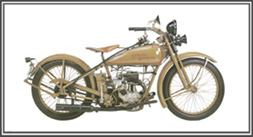
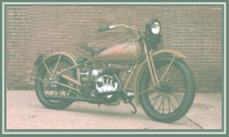
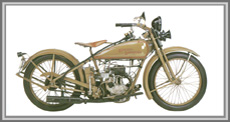
1926 B Single 1926 Single 1926 Single
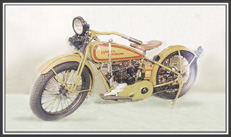
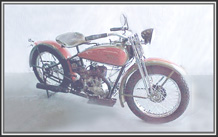

1926 B Single 1926 350cc 1926 Single (pup)
The side-valve models; A, (magneto), and B, (battery), accounted for more than 7,000 motorcycles, a majority of which were sent overseas to Australia, Europe, and Great Britain. These single had a three speed transmission, "ful-floeting" seat, and an external contracting rear brake and sold for $210. Fenders were widened for 1926 and were mounted to the rigid instead of the spring fork. The basic paint scheme has a maroon stripe with a gold stripe in the middle and a new rust proof finish was added to the spokes. Chassis designs shared similarities on both the singles and the twins for 1926, with tire options of 3.5 fabric or 3.85 balloon cord. Two different speedometers were available from either Corbin Brown or Johns-Manville companies, and both singles and twins shared similar electrical systems and the cam-actuating clutch mechanism was changed to a fork system on the twins for 1926.A small control panel box which had the ignition switch on the left side and the light switch on the right was mounted at the cross section of the handlebars above the forward most front part of the tank.
Model 26F: Twin, chain drive, magneto ignition, 8.68hp, 60.34ci, number preceded by 26F, 3 speed, iron alloy pistons, Model 26FD: Twin, chain drive, magneto ignition, 9.5hp, 74ci, number preceded by 26FD, 3 speed, iron alloy pistons, Model 26J: Twin, chain drive, generator, 8.68hp, 60.34ci, number preceded by 26J, 3 speed, iron alloy pistons, Model 26JD: Twin, chain drive, generator, 9.5hp, 74ci, number preceded by 26JD, 3 speed, iron alloy pistons, were also offered for the twins this year with a production of 26, 354 motorcycles.
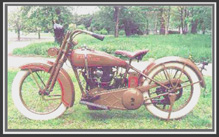
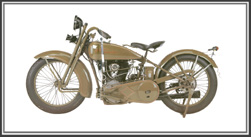
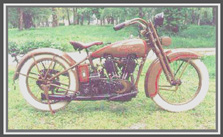
1926 JD 1200cc IOE 1926 JD 1926 JD 100cc IOE
The 1926 Harley Davidson Peashooter was made for their racing model in 1926. In the late 20's, the AMA, (American Motorcycle Association), held races with different varieties of engine classes, with the smallest being the 21ci (350cc) class. The singles, like the FHAC's were the type that held most of the places in those races. Being a full-on factory racer, anything that didn't help it go faster was usually removed as dead weight in quest of winning races.
The racing scene was showing more potential for amateur competition so the prospects of racing bikes being made available to the public as well as the factory paid racers became an option as the racing scene continued to develop. Using the production version of the bikes, both side-valve and overhead versions became available to the pubic. The frames were shortened, a minimal telescopic fork was added, and the entire package could weighed in at 215 pounds. Most of the Peashooters weighed around 235 pounds and reached about 70 mph . Harley decided to make two singles; one, a side-valve model for economical transportation, and an overhead version for sport riders and racers.
No brakes, no clutch, and no transmission,...........
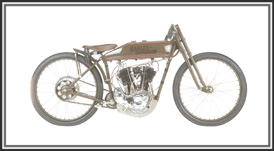

1926 FHAC 1926 Peashooter
The new singles featured detachable cylinder heads using a combustion chamber design pioneered and patented by a British engineer named Harry Ricardo. The design created a turbulent fuel charge which gave a more complete combustion and more horsepower. Many used their 350cc motors with an exposed valve train and vestigial exhaust pipes, allowing the full benefit of the factory tuners during the races. Some of the racing engines gave a good 30 mph more than the production versions. Some topping out at 100 mph. Some of the Peashooters were even shipped overseas, seeing competition in speedway events, becoming a popular light-weight sporting motorcycle for the European motorcycle enthusiasts. The singles appealed to those that preferred a lighter weight bike as well as those who couldn't afford the twins. The flatheads were produced in larger numbers. At eight horsepower, the side-valves sold for $210 and $235 and 12 horsepower overheads, AA and BA models), were sold at $250 and $275. The magneto racing bike was sold for $300.
Though the pocket-valves served Harley Davidson for more than 20 years, the four valve flatheads could beat eight-valve overheads in the races, giving direction to the next generation of engine design. The development of the two-cam pocket-valve racers led to the production of the sixty-one and the seventy-four twin cam road models a few years later.
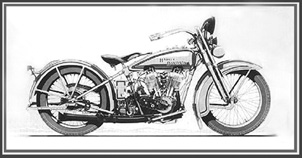
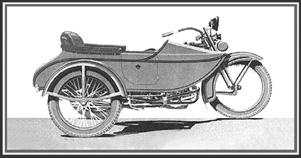
1927 Twin 74ci 1927 Twin with Sidecar
In 1927, the singles got stronger frames, fuel tanks and motor mounts. The standard handlebar could be replaced by a flatter and shorter speedster bar, and the fender was mounted the rigid fork struts. The full-floeting seats remained standard on both the twins and the singles. Model 27F: Twin, chain drive, magneto ignition, 8.68hp, 60.34ci, number preceded by 27F, 3 speed, iron alloy pistons, Model 27FD: Twin, chain drive, magneto ignition, 9.5hp, 74ci, number preceded by 27FD, 3 speed, iron alloy pistons, Model 27J: Twin, chain drive, generator, 8.68hp, 60.34ci, number preceded by 27J, 3 speed, iron alloy pistons, Model 27JD: Twin, chain drive, generator, 9.5hp, 74ci, number preceded by 27JD, 3 speed, iron alloy pistons, for the twins, with a production of 19, 911 motorcycles.
Overhead-valve singles were produced in fewer numbers than the flatheads. Only 722 of the over-head-valves models were produced in 1927, where more than 4,000 side-valve were built.
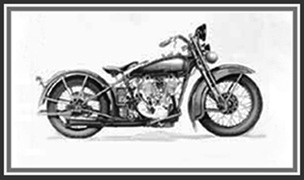
1928 JDH
In 1928, the first twin-cam engine and front wheel brakes were available on Harley-Davidsons. With this modification, the motorcycle could reach speeds up to 85 mph. When the new V-series came out in August 1929, there were other doubts that the bike might not be what was expected. It still used the J's total-loss lubrication system (which had become obsolete by this time). With it's new engine, frame and forks, it was also much heavier than the old J.: 529lb (240kg) against 408lb (185kg). If the claims of 15-20 percent more horsepower been correct, this might have been a notable change. The VL produced 30hp at 4,000rpm, just 1 hp more than the equivalent JDH. The lower compression (4:1) V made 28hp against the JDL's 26hp. The V bikes had been given very small flywheels, which blunted performance over 50mph (80km/h) and caused vibration at high speeds.
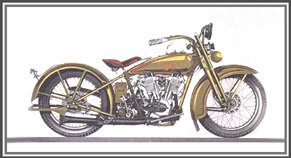
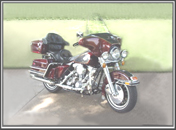
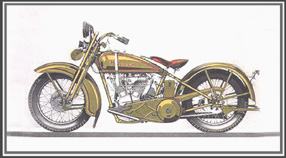
1928 Twin 1928 twin
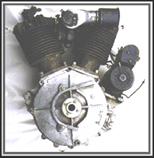
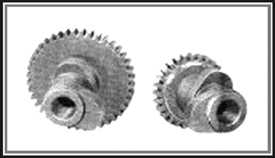

2 Cam Engine 2 Cam 2 Cam Engine
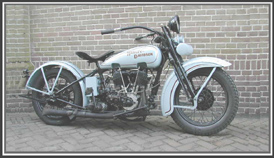

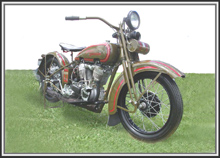
1928 1928 Brakes 1928
The JDH's first appearance was in 1928, known as the Two-Cam. The 61ci model was offered as the JH (1000cc), and the 74ci model as the JDH (1200cc). The credit was given to the racing experience throughout the 1920's from building twin-cam competition bikes with the need for a faster motorcycle so they decided to apply the knowledge gained to a road model.

1929 JDH
The JDH got the racer's direct valve gear with tappets replacing the standard roller arms. The Two-Cam had domed Dow metal pistons, optional on the J and JD models, made with magnesium alloy which meant higher compression. The Two-Cam was capable of higher rpm's with the addition of dual intake valves springs were. Lubrication was improved with the addition of a new throttle-controlled oil pump, and larger cooling fins on the head help dissipate the heat. The JDH came with a smaller and lighter weight fuel tank with a reduced capacity of 4.75 gallons from the previous 5.3. Smaller diameter wheels lowered the center of gravity, heavier duty spokes in the rear wheel were added which helped with the handling of the additional power, and a front brake was added. More color options were also being available in various color and two tone combinations upon request which were advertised in their sales brochures. The combustion chambers were modified with a bronze insert so tuners could boost the JDH engine to produce more horsepower. The addition of front brakes in 1928 drastically improving the safety and handling of the motorcycles. Through accepting challenges from competitors, testing, and meeting the demands for better motorcycles, Harley Davidson's development as a builder of motorcycles accelerated.
In 1929, a 45 cubic inch, (750cc) V-Twin D model was introduced, which came to be known as the "Flathead". The new Flathead 45 came in the D model, (as standard), and a DL model (of higher compression) as well as a 30.50 cubic inch (500cc) model C single were introduced as their two new additions along with their other models. The D model, (standard), could be changed to the higher compression Dl model by changing the cylinder head and a 28 tooth rear sprocket.

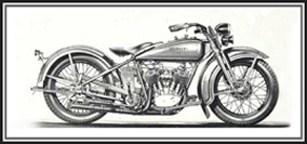
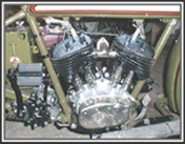
1929 45ci 750cc Twin
After the stock market crash of October 1929, Harley's sales suffered with everyone else's industry. The 45 cubic inch (750cc) side-valve V-twin engine, (later to be known as the "flathead"), was introduced on the "D" model. The new "D" series used the same frame as the singles, which was made possible by mounting the generator perpendicular to the engine. This engine proved to be so reliable that variations of it were available on their motorcycles as late as 1972. The 1000cc and 1200cc models were still available. 1929 also saw the last year for the J model. The J model was basically the all purpose motorcycle for it's time with a production of some 75,000 motorcycles, but as the Great Depression came, the flatheads could be produced less expensively.
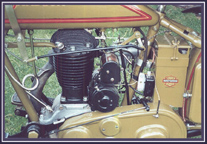
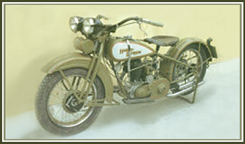
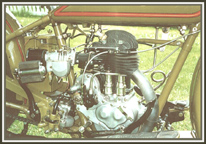
1929 C Model Single
The Model C flathead single had a 30ci displacement, 3.09 x 4inch bore and stroke, with 10.4 horsepower at 3,600 rpm's, a Schebler Deluxe carburetor, 3 speed transmission, both final and primary chain drive, expanding shoe front brake, and contracting band rear brake. A Four-Tube Muffler was also introduced in 1929. It's claim was that it was the most quiet muffler ever produced for a motorcycle though it lasted only two years except for the 45's and the singles. The addition of two-bullet Headlights was also introduced in 1929, but were only fitted for that and the following year. Headlight and ignition switches placed on either side of an ammeter mounted at the cross section of the handlebars, at the top front section above the fuel tank. The charging current could be controlled by a lever on the generator.
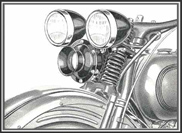
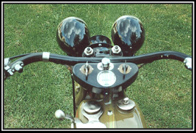

For 1929, Model 29A: Single, chain –drive, magneto ignition, 3.31hp, 21.098ci, number preceded by 29A, SV, Dow metal pistons, Model 29AA: Single, chain-drive, magneto ignition, 3.31hp, 21.098ci, number preceded by 29Aa, OHV, Dow metal pistons, Model 29B: Single, chain-drive, generator, 3.31hp, 21.098ci, number preceded by 29B, SV, Dow metal pistons, Model 29BA: Single, chain-drive, generator, 3.31hp, 21.098ci, number preceded by 29BA, OHV, Dow metal pistons were offered for singles, and Model 29D: Twin, chain-drive, generator, 45.32ci, number preceded by 29D, three speed, Dow metal pistons, Model 29F: Twin, chain-drive, 8.68hp, 60.34ci, number preceded by 29FD, three speed, iron alloy pistons, Model FD: Twin, chain-drive, magneto ignition, 9.5hp, 74ci, number preceded by 29FD, three speed, iron alloy pistons, Model 29J: Twin, chain –drive, generator, 8.68hp, 60.34ci, number preceded by 29J, three speed, iron alloy pistons, Model 29JD: Twin, chain-drive, generator, 9.5hp, 74ci, number preceded by 29JD, three speed, iron alloy pistons, Model 29JXL: Twin, chain-drive, generator, 8.68hp, 60.34ci, number preceded by 29JXL, three speed, Dow metal pistons, Model 29JDXL: Twin, chain-drive, generator, 9.5hp, 74ci, number preceded by 29JDXL, three speed, Dow metal pistons, Model 29JH: Twin, chain-drive, two cams, generator, 8.68hp, 60.34ci, number preceded by 29JH, three speed, Dow metal pistons, and Model 29JDH: Twin, chain-drive, two cams, generator, 9.5hp, 74ci, number preceded by 29JDH, three speed, iron alloy pistons, were offered for twins. The 45ci models offered 25.x 3.85 inch tires, standard. 61 and 74 models were offered with 27 x 3.85 inch tires standard. Production was 21, 142 motorcycles Their smaller and lighter 37ci Sport Twin hadn't achieved the success it was set out for, and only lasted five years. It was less powerful than the newer models and was discontinued.

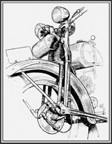
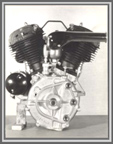
The D model was Harley-Davidson's first side-valve motor, which proved so reliable, that variations of it were still available on their motorcycles as late as 1972.
Before the war more than 50 American manufacturers had been building motorcycles; now most of them were going out of business. Many of the smaller companies had used major components-wheels, engines, carburetors, and lights manufactured in Europe. During the war, many of their sources had dried up. Many of those companies never became productive again. The bikes that did make it were really wonders. Slick, stripped-down board-track racers, designed to race on high-banked oval 'dromes made by laying millions of feet of 2 x 4 lumber on edge. These racers ran stubby, straight exhaust pipes three or four inches long, had no brakes, no clutch, no throttle, no suspension; just a carburetor that was set wide open, direct drive to the rear wheel, and a kill button. One of the hottest was the 61 CID eight-valve, actually built before the war, and priced at a then-awesome $1,500.00. (about four times what an Indian board tracker from the same time period cost). Later came the twin-cams, inlet-over-exhaust or F-head models, good for speeds up to 120 mph. These used cam-and-rocker actuated intake valves like the modern overhead-valve engine (but the pushrods and rockers were exposed), but used flathead-(side valve) style exhaust valves.
In terms of machinery the 1920's were often referred to as the golden years of motorcycling, during which decade, Harley produced two machines which blazed the trail for all their bikes to follow.
Author: Dermage,/Wm.R.G./Webmaster: wm.grett@yahoo.com